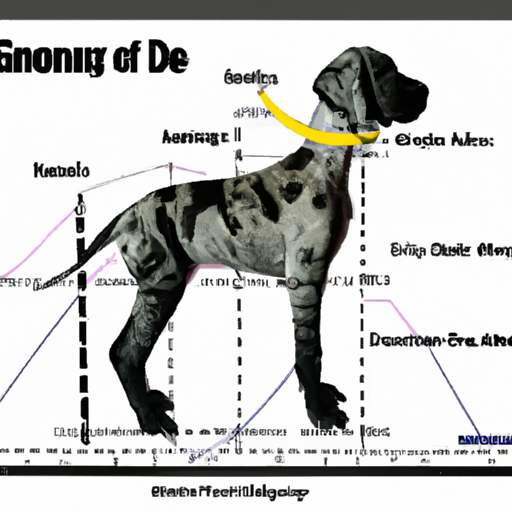If you’re a proud owner or a prospective caregiver of a Great Dane, one question that might be lurking in your mind is, “when do Great Danes stop growing?” This giant breed has a fascinating growth pattern, and it’s essential to understand this to provide them with the best possible care.
Understanding the Growth Pattern of Great Danes
Contrary to popular belief, the growth of a Great Dane doesn’t stop when they reach one year. Instead, their growth spans over a more extended period, usually until they are about two to three years. However, it’s crucial to remember that every dog is unique, and the growth timeline can vary slightly from dog to dog.
The most significant growth spurt typically happens within the first year, where they reach about 70% of their adult size. This rapid growth slows down from the second year, focusing more on filling out and gaining muscle mass.
The Role of Genetics and Nutrition in Growth
Just as in humans, genetics plays a significant role in the growth of Great Danes. The size of the parents can give you an idea of how big your puppy might get.
Nutrition is another crucial factor. It’s essential to provide your Great Dane with a balanced diet that supports their growth and development.
Here’s a basic feeding guide for your Great Dane:
| Age | Meals Per Day | Type of Food |
|---|---|---|
| 2-4 months | 4 | Puppy Food |
| 4-8 months | 3 | Puppy Food |
| 8-12 months | 2 | Adult Dog Food |
| 1 year & up | 2 | Adult Dog Food |
The Importance of Regular Vet Checkups
Routine vet checkups are crucial during your Great Dane’s growth period. These checkups can help ensure your Great Dane is growing at a healthy rate. Your vet can also provide personalized advice on diet and exercise based on your dog’s specific needs.
Exercise and Growth
While exercise is essential for your Great Dane’s overall health, it’s important not to overdo it during their growth phase. Excessive exercise can put undue pressure on their joints and bones, potentially leading to health issues in the future.
Here are some exercise tips for your Great Dane:
- Limit high-impact activities like jumping or hard running until they’re fully grown.
- Opt for low-impact exercises like walking or swimming.
- Ensure they get plenty of rest between exercise sessions.
Growth-Related Health Issues
Great Danes are prone to certain health issues related to their rapid growth. These include:
- Hip Dysplasia: A condition affecting the hip joint, often caused by rapid growth.
- Bloat: A life-threatening condition where the dog’s stomach twists. This is common in large, deep-chested breeds like Great Danes.
Regular vet check-ups and maintaining a healthy diet and exercise regime can help prevent these conditions.
Understanding Your Great Dane’s Growth Milestones
Understanding your Great Dane’s growth milestones can help you ensure they’re on the right track. Here’s a simple growth timeline:
- 0-3 months: Rapid height growth
- 4-8 months: Continued height growth but at a slower rate
- 9-18 months: Height growth slows down, the focus shifts to gaining muscle mass
- 18 months onwards: Slow and steady growth until they reach their full size
FAQ
Q: Can I still get my Great Dane spayed/neutered if they’re still growing?
A: Yes, but it’s recommended to wait until they’re at least one year old. This allows their bones and joints to develop fully.
Q: Is it normal for my Great Dane to be smaller/larger than average?
A: Yes, there can be variation in size among Great Danes due to genetics and individual differences. As long as your dog is healthy and happy, there’s no need for concern.
Q: How can I tell if my Great Dane is growing at a healthy rate?
A: Regular vet checkups are the best way to monitor your Great Dane’s growth. Your vet can compare your dog’s size and weight to breed standards and ensure they’re growing at a healthy rate.
Q: Why is my Great Dane not growing?
A: Several factors can affect growth, including genetics, diet, and health issues. If you’re concerned about your Great Dane’s growth, it’s best to consult with a vet.
Remember, as a caregiver, your role is to provide a nurturing environment for your Great Dane to thrive. Understanding their growth pattern will help you tailor their care needs appropriately and ensure they live a healthy, happy life.



